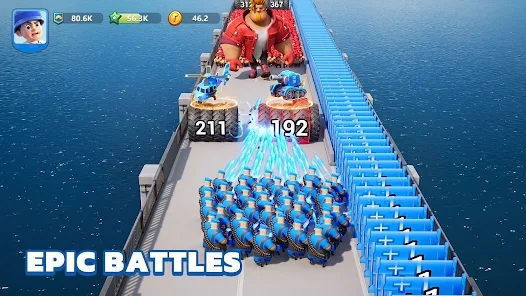Unlocking Creativity: How Building Games Transform Learning in Educational Environments
Building games have taken the educational landscape by storm, creating a vibrant, interactive way for students to engage with learning. From educational games designed to ignite imagination to specific tactics like leveraging Clash of Clans builder base layouts, the impact is multifaceted. Let's dive into how these games are reshaping educational environments and enhancing creativity!
The Rise of Building Games in Education
In recent years, building games have gained popularity beyond just entertainment. Educators have realized the potential these games hold in developing crucial skills like problem-solving, collaboration, and creativity. Unlike traditional learning methods, these interactive platforms encourage students to think outside the box. They have unraveled new pathways for knowledge acquisition, making complex subjects accessible and enjoyable.
Benefits of Educational Building Games
Many benefits come with integrating building games into the educational framework. Here are a few pivotal points:
- Increased Engagement: Building games capture the attention of students in a way traditional methods often fail to do.
- Enhanced Collaboration: Many of these games encourage teamwork, promoting collaborative skills vital for the workforce.
- Critical Thinking Development: They require players to devise strategies and solve problems creatively.
Connecting Classroom Concepts with Building Games
Those incorporating educational games into their teaching methods have successfully connected classroom concepts with real-world applications. For example, students can learn physics principles through the construction mechanisms in games like Minecraft. Consider the following table outlining typical classroom subjects and corresponding building game applications:
| Subject | Building Game Example | Learning Outcome |
|---|---|---|
| Math | Growtopia | Understanding geometry through construction |
| Science | Space Engineers | Learns about engineering and physics |
| History | Assassin's Creed: Discovery | Explores historical events through a building perspective |
Game Design as a Learning Tool
The concept of designing a game can also be enlightening. When students create their own building games, they engage in a practical way that reinforces learning. This process encompasses:
- Brainstorming Ideas: Students think critically about what makes a game fun and educational.
- Building Mechanics: They learn the basics of game design and programming.
- Feedback Loop: Working with peers to troubleshoot and refine their designs boosts collaboration.
Integrating Technology: Delta Force Downloads and More
Before we delve further, it's worth mentioning technological supports enhancing this experience, like the Delta Force download for PC. Although this isn't a direct educational tool, tools like these foster hands-on engagement with technology. Students can navigate through diverse challenges and build strategic skills, mirroring the experience gained from constructing their games.
Potential Challenges in Implementation
Of course, moving towards building games isn't all smooth sailing. Some challenges educators face include:
- Resource Limitations: Not all schools can afford the technology.
- Technical Knowledge Gaps: Teachers might need training to facilitate the games effectively.
- Curriculum Alignment: Ensuring the games fit within existing educational standards can be challenging.
Conclusion: The Future of Education and Creative Building Games
Building games have the potential to unlock creativity across educational environments, providing memorable learning experiences that traditional methods often lack. Through these interactive platforms, students are not just passive learners; they are architects of their educational journeys. As technology continues to evolve, it’s vital for educators and institutions to embrace these tools, integrating them creatively to enhance learning outcomes.



